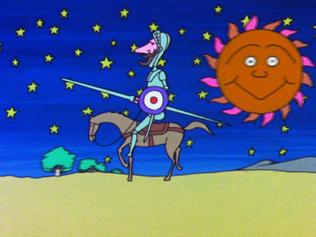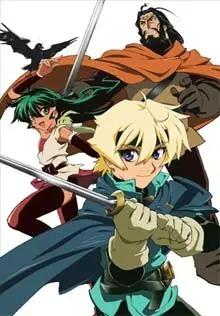Initial D Second Stage Review: The appeal and evolution of the second stage

"Initial D Second Stage" - The ultimate car action that spins the legend of the mountain pass■Overview of the work"Initial D Second Stage" is a TV anime series that aired on Fuji TV every Thursday from October 28, 1999 to February 3, 2000. It consists of 13 episodes, each 30 minutes long. The series is based on the manga of the same name, "Initial D" by Shigeno Shuichi, and is directed by Masaki Shinichi, produced by Pastel, and produced by Prime Direction OB Planning. ■ StoryTakumi Fujiwara is a genius driver who has reached the top of Mount Akina. However, he is troubled by his lack of knowledge about mechanics. Takumi is aware that his beloved Hachiroku has reached its performance limit, but does not know how to deal with it. Meanwhile, the Lancer Evolution group "Emperor", based in Irohazaka, Gunma, has heard rumors about Takumi and challenges him to a race. Takumi will deepen his driving technique and knowledge of mechanics as he faces off against the new challengers. ■Explanation"Initial D Second Stage" is the sequel to "Initial D" which was broadcast in April 1998. It depicts the coming-of-age story of Takumi Fujiwara, a genius racer who attacks mountain passes in his Trueno AE86, commonly known as "Hachiroku". The appeal is in the car action which pursues realism, with all the cars being created with CG and the action itself being supervised by the driver Keiichi Tsuchiya. In terms of music, it is also notable for the use of Eurobeat in various parts, including the opening theme. The ending theme is not animated, but is made using footage of actual artists. ■Cast
■ Main staff
■ Main Characters
■ Main robot itemsShohei Obara is in charge of the mechanical design. In "Initial D Second Stage", the realistic depiction of the cars is an important element, and CG technology is used to bring out their appeal to the fullest. ■Subtitle
■ Theme songs and music
■Detailed review"Initial D Second Stage" is a car action anime that depicts the battles of street racers on mountain passes, and has been loved by many fans. In particular, Second Stage depicts the growth of the main character, Takumi Fujiwara, and his confrontation with new rivals that surround him. Below, we will explain in detail the appeal and features of the work. Realistic car actionThe biggest appeal of "Initial D Second Stage" is its realistic car action. The depiction of car movement and drifting is reproduced extremely realistically using CG technology. This was made possible thanks to the supervision of driver Keiichi Tsuchiya. Keiichi Tsuchiya is a professional driver who actually drives on mountain passes, and his experience and knowledge are reflected in the anime. As a result, the car behavior and drifting techniques are extremely realistic, and have the power to draw the viewer in. Character DevelopmentAnother point not to be missed is the growth of the main character, Takumi Fujiwara. In the First Stage, he is depicted as a boy who drives through mountain passes to help his father deliver tofu, but in the Second Stage, he faces a new challenge: a lack of mechanical knowledge. To overcome this challenge, Takumi deepens his driving technique and mechanical knowledge while battling new rivals. This story of growth not only moves the viewer, but also evokes empathy as viewers can relate to his own growth. Eurobeat MusicMusic is also an important element of Initial D Second Stage. In particular, the opening theme "Blazin' Beat" and the ending theme "Kimi ga Iru" use the Eurobeat genre, which really livens up the atmosphere of the work. Eurobeat is a music style that was popular from the 1980s to the 1990s, and is characterized by a fast tempo and energetic melody. This music conveys to the viewer the sense of speed and tension of driving through the mountain passes. Additionally, the ending theme "Kimi ga Iru" uses footage of the actual artist instead of animation, which gives it a visually fresh impression. New RivalsIn the Second Stage, new rivals appear. In particular, Sudo Kyoichi, the leader of the Lancer Evolution group "Emperor," is portrayed as a strong rival for Takumi. Sudo is a skilled driver known as the "Iron Man," and is known for his calmness in any situation and his faithful steering. His battles with him are an important factor in encouraging Takumi's growth. Wataru Akiyama also appears as a new rival, and his own growth is depicted through his battles with Takumi. The battles with these new rivals add to the tension and excitement of the work. ■Reasons for recommendation"Initial D Second Stage" is highly acclaimed as a car action anime and is loved by many fans. It is a fascinating work that draws viewers in with a combination of various elements such as realistic car action, character growth, Eurobeat music, and confrontations with new rivals. It is a must-see work, especially for those who are interested in cars and drifting. It is also an excellent coming-of-age story, and you can empathize with it by overlapping your own growth with the characters. Please give it a watch. Related information"Initial D Second Stage" is an anime adaptation of some episodes from the original manga "Initial D." The original manga was drawn by Shuichi Shigeno and was serialized from 1995 to 2013. In addition to Second Stage, other anime series have been produced, including First Stage, Third Stage, Fourth Stage, and Final Stage. By watching these series as well, you can enjoy the world of "Initial D" even more deeply. ■ Summary"Initial D Second Stage" is an attractive work that depicts realistic car action and character growth. The Eurobeat music and the showdown with new rivals are also points not to be missed. This work is highly recommended for those who are interested in cars and drifting, and those who want to enjoy a story of growth. You can enjoy the world of "Initial D" even more deeply by watching the related series. |
<<: Arisa☆GOOD LUCK - A thorough analysis of the charming characters and moving story!
>>: Black Jack Karte VIII Green Feelings - A thorough analysis of the moving story and deep themes
Recommend
The appeal and evaluation of Maho Girls PreCure!: A new development in the PreCure series
The appeal and evaluation of Maho Girls PreCure! ...
The appeal and evaluation of "Transformers: The Robot Wars": A must-read review for anime fans
Fight! Super Robot Lifeform Transformers - Fight!...
"SpongeBob SquarePants: The SpongeBob Movie" is scheduled to be released in China on March 8
On February 24, the movie "SpongeBob SquareP...
The director of Space Jam 1 watched the film in five sessions and received many criticisms
Joe Pytka, the director of the 1996 version of &q...
Youku announces it has won the mainland streaming rights for the sci-fi film "The Wandering Earth"
On February 21, Youku announced that it had won t...
The appeal and reviews of "Tomodachiya": A deep look into the story of friendship
The appeal and reputation of Tomodachiya "To...
The poster of the animated film "Spy Play" is released and it will be released on December 22
The new animated film of the popular anime "...
It's the sea! Let's set sail! Niko Niko Pun - A thorough evaluation of the appeal and educational value of children's animation
The appeal and evaluation of "The Sea! The V...
Martin Scorsese considered filming Joker: The film is great
Recently, Martin Scorsese talked about "Joke...
The appeal and evaluation of "Issun-boshi": the story of a little giant
The appeal and evaluation of Issunboshi The short...
The appeal and reviews of Onyankopon: A must-see anime for cat lovers
Onyankopon - The healing and adventure of cat-ear...
The official trailer of "Adam Project" will be launched on Netflix on March 11
The new sci-fi film "Adam Project" rele...
Gokaku Rock'n'Roll: The appeal and evaluation of Minna no Uta
"Pass Rock'n'Roll" - Looking ba...
The appeal and evaluation of "The Idolmaster Cinderella Girls Theater" 1st SEASON#1
The appeal and evaluation of "The Idolmaster...
Kenshin ranked third! Japanese Sword Day Anime Swordsman Character Selection
October 4th is the "Japanese Sword Day"...









